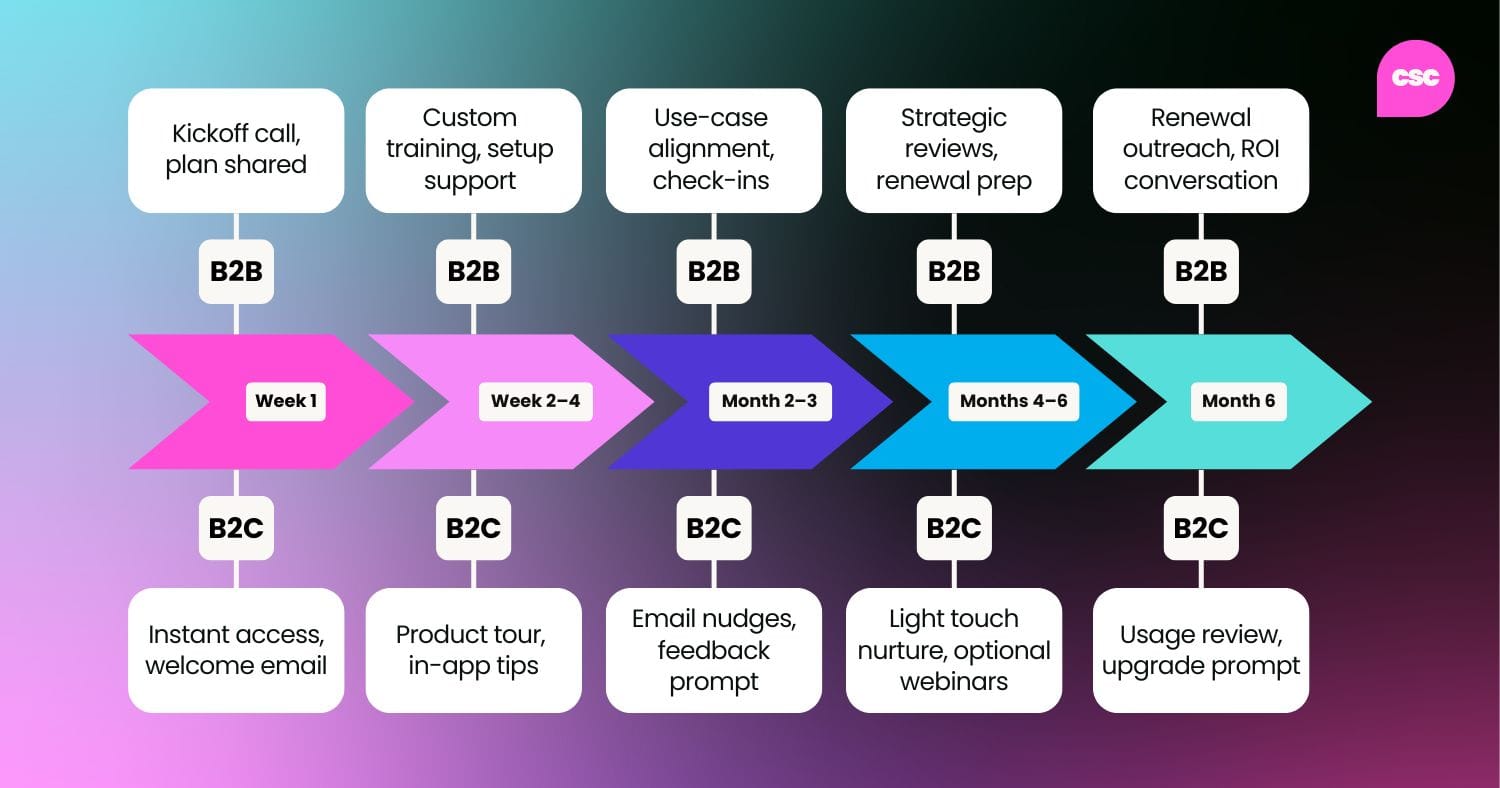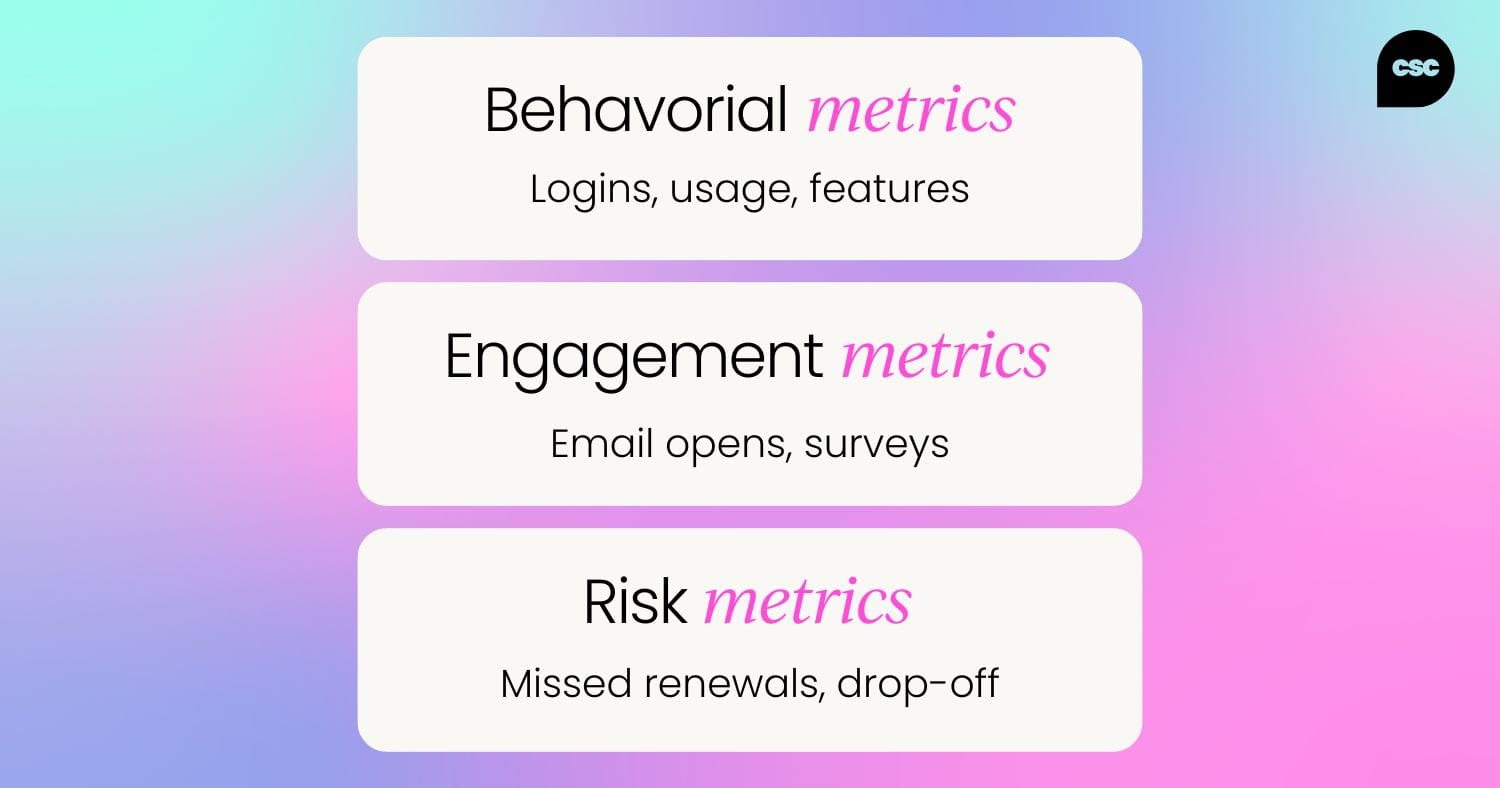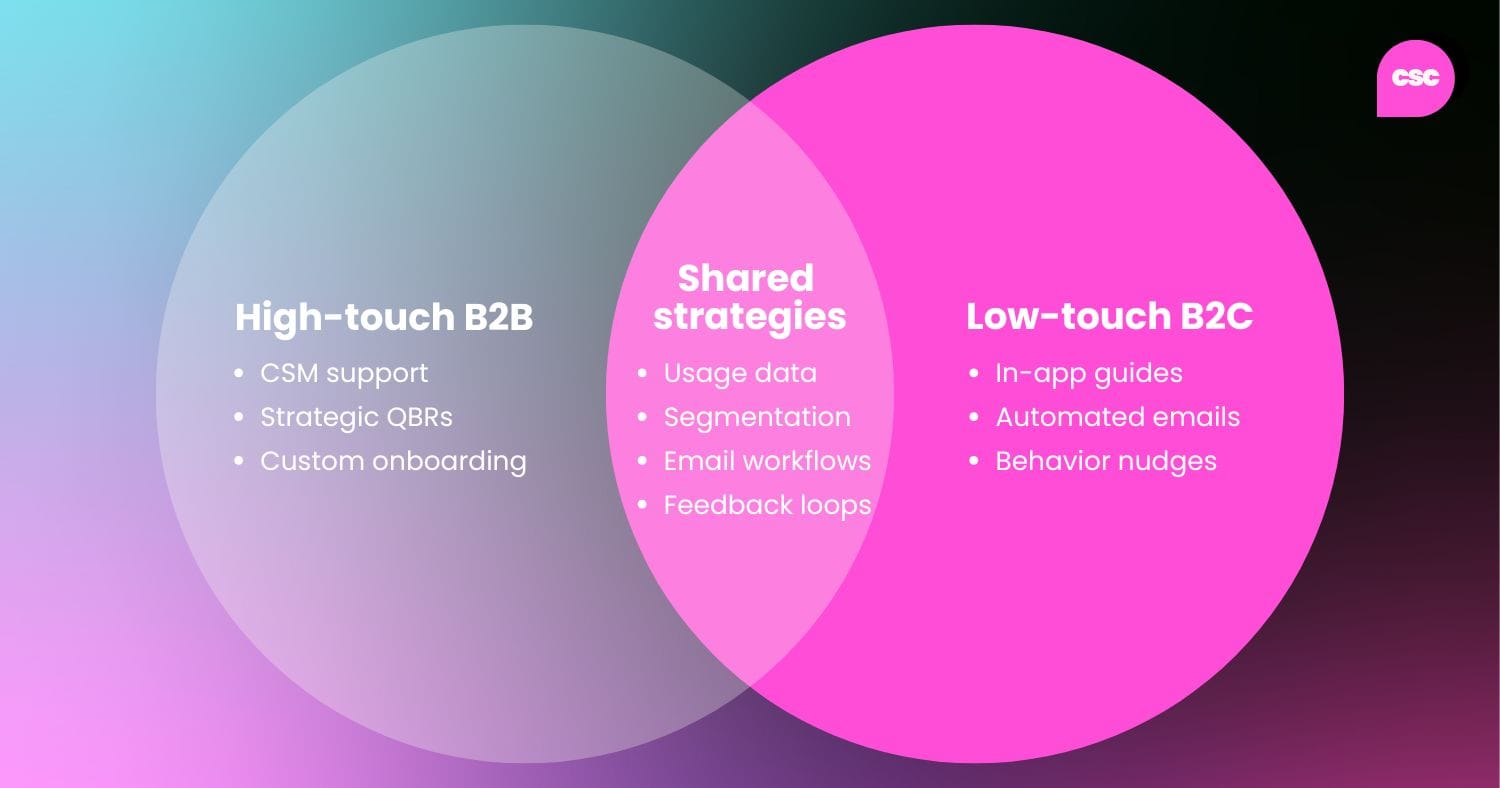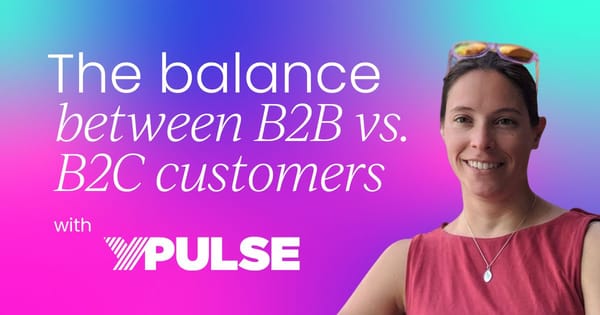Balancing enterprise clients with individual customers starts with segmentation and a clear understanding of each audience’s expectations, value, and engagement model. At YPulse, we’ve learned that success lies in treating them differently where it matters, while also identifying shared behaviors and interests that allow us to scale communication and product education across both groups.
Recently, during a panel I was a part of, discussing onboarding strategies in SaaS and digital-first businesses, one of my co-panelists, Ann Chan, brought up the notion of “everboarding.” I kid you not, all of us in the room – panelists and audience members – paused, feeling the weight of how accurate this term is to describe how customer success feels these days.
Why customer segmentation drives success
The pressure of constantly having to identify moments that matter, leverage tools for efficient engagement, and stay on top of what each client needs can feel overwhelming. Yet every day presents an opportunity to engage your customer and add value.
As a result, getting the customer journey right based on their segmentation becomes mission-critical for driving ongoing value.
Adapting to B2B vs. B2C customer needs
For organizations like mine at YPulse, which have both B2B and B2C offerings, this often means there is no one-size-fits-all approach for ensuring customers are getting what they need, and being able to cross-pollinate knowledge is the key to efficient customer success.
High-touch vs. low-touch onboarding in SaaS
Mapping the B2B onboarding journey
Typically, the biggest difference between a B2B (business-to-business) client and a B2C (business-to-consumer) client is their annual contract value (ACV), which greatly influences the level of personalization and customer success engagement strategies.
This segmentation informs how we tailor our customer journey mapping, ensuring we align onboarding workflows and success metrics with each customer type's expectations and contract scope.
Ultimately, the remit of any CS team is revenue growth. For B2B clients, this often requires gathering multiple stakeholders, proving value for several use cases, and establishing high-touch moments to align against large goals.
At YPulse, we have a rigorous onboarding methodology that internally maps out what the first six months need to look like for our B2B clients, then transitions them into the renewal cycle, which kicks into high gear 90 days from their renewal date.

For organizations with complex implementations, this type of onboarding journey is more applicable after implementation is complete. However, if, like YPulse, your implementation can be done in parallel or is able to be turnkey, then the time to value recognition becomes even more important.
Streamlining B2C engagement with low-touch strategies
Eventually, YPulse plans to aim for a profit margin of 8:1, where every $1 spent on acquisition lines up with at least $8 in profit. As YPulse is in the early stages, this means we are testing where outreach yields the greatest return on investment (ROI).
The ROI is measured by both new customer sign-ups and monthly renewal rates – two key customer success KPIs that guide our customer retention strategy. Given the monthly payment setup for our B2C options, we know that it’s extremely easy for customers to come and go as their use cases see fit.
So, how do we scale retention methods when the goal is to focus that $1 on acquisition efforts?
Every B2B client is made up of several B2C relationships. Taken collectively, B2C clients can often be segmented together into pools that will benefit from B2B tested approaches.
Segmentation allows for focused, relevant outreach that, while it may not be as personalized, will still deliver the right content and messages at the right time based on stated interests, click behavior, and learnings that our B2B Customer Success Manager (CSM) team shares with our B2C team.
All customers come to YPulse because they have an interest in tweens, teens, and young adults, typically from a marketing, advertising or insights point of view. That commonality makes messaging and newsletters easier to build around a common value proposition.
So, even if the cadence of messaging requires personalization, there is an opportunity to unify the messaging and promote the most popular materials in order to drive engagement and foster adoption.
Identifying and retaining at-risk customers using customer data
Balancing strategies for these two different customers is all about understanding when to treat them the same and when to treat them differently. “At risk” for high ACV B2B customers looks and feels different from our monthly B2C subscribers and, as YPulse embarks on our journey, this is something we are learning to identify and understand better as we move forward.
Leveraging tech for customer insights
While both customer segments share health metrics rooted in behavioral data collected through our Pendo product analytics portal – tracking usage, engagement, and feature adoption – we also rely on CRM insights from HubSpot, which helps us monitor campaign open rates and user actions.
Together, this behavioral data enables us to develop data-driven customer health scores that flag potential churn risks early. However, what classifies as “healthy” behavior differs significantly between our high-ACV B2B clients and our more fluid, monthly B2C users.

Differentiating churn risk in B2B vs. B2C models
So, while metrics can be gathered efficiently at scale, the churn prevention tactics and proactive outreach strategies we deploy must be tailored to each segment's unique profile.
Using customer feedback loops to improve product adoption
A lot of information is gleaned from a Pendo usage report – logins, clicks, downloads, sign-ups, enrollments, just to name a few that YPulse tracks across customers.
Benchmarking these metrics against healthy customers, as well as what healthy looks like for that customer, is always a part of the conversation. This information is scalable and looks at the collective adoption of a platform or service throughout the organization.
These insights contribute to a continuous customer feedback loop, a foundational part of any digital adoption strategy, especially for complex or underutilized product features.

A dashboard case study
When I joined YPulse, one of my very first meetings with the leadership team was spent going through all of these key metrics. By analyzing patterns of usage and behavior, we were able to make data-driven decisions about which products our clients were actively using and where we needed to either invest additional resources or consider sunsetting.
One of my teammates noted a dashboard that was only being used by a small number of employees at any given company and, even then, with far less frequency; in fact, the frequency of engagement was only a quarter of that engagement.
When we looked at other metrics, we saw that the time spent on that dashboard was long, and often there were scattered click paths. Was there a training issue that made it hard for our customers to adopt it? Were customers who engaged with this dashboard frustrated and thus didn’t see value?
This dashboard was a key portal for a significant and costly product, so the question had to be posed: Is this dashboard eligible for sunsetting?
As I was new to the product at the time, I immediately took it upon myself to set up meetings with customers who were using this dashboard, as well as uncover customers who had it in their package but had not used it in the past six months.
In preparation for my first meeting, someone from our product team who knew this dashboard well walked me through it, got me fully trained and ensured that my conversations with our clients would be meaningful. Together, we came up with a few hypotheses about why usage was low:
- The data are complex, and only certain professionals would be able to understand the data.
- While our dashboards reflected near real-time data collection, the ways companies used these results are not near real-time but rather monthly or quarterly.
- The dashboards are clunky, and while there was a training video available, customers felt intimidated because it was not easy.
Why complex features need tailored support and feedback
With these three main hypotheses in mind, I started talking to customers and learned not only were we right across the board, but the regular users felt the dashboard was essential to their value with YPulse. We took the metrics and invested time to collect feedback and were able to implement a few changes to how our CSMs train and support this dashboard, while avoiding sunsetting something critical.
Through trusted partnerships, getting clear feedback that is actionable remains key. As we build up our B2C product offering, we’re keeping this in mind.
In short, we have identified a small number of B2C customers who can offer this kind of feedback. While it is not a formal customer advocacy board, these customers will provide the essential feedback that helps us make business decisions while making sure even the low-touch customers have a seat at the table.
Delivering unified customer success at scale
Both to minimize stress within an organization, and reduce confusion for your clients, any way to take advantage of the overlaps, while respecting the difference between customer needs and expectations, is key.

Striking that balance where customer success resources and process automation can be shared without sacrificing the end-user experience will optimize your team’s resource allocation and delight customers with a consistent experience.
Reusing high-touch methods to improve low-touch experiences
There will be times when the B2B high-touch playbooks will help troubleshoot the low-touch B2C customer needs, and these low-touch tools and methods can save B2B CSMs a ton of extra work.
Building flexibility into your customer success framework
By staying flexible and thinking of these as swim lanes where team members may be working in parallel, while all in the same pool, individual contributors will feel empowered to lean in when needed, and comfortable delivering more low-touch methods to support lower critical needs from across your client portfolio.



 Follow us on LinkedIn
Follow us on LinkedIn



